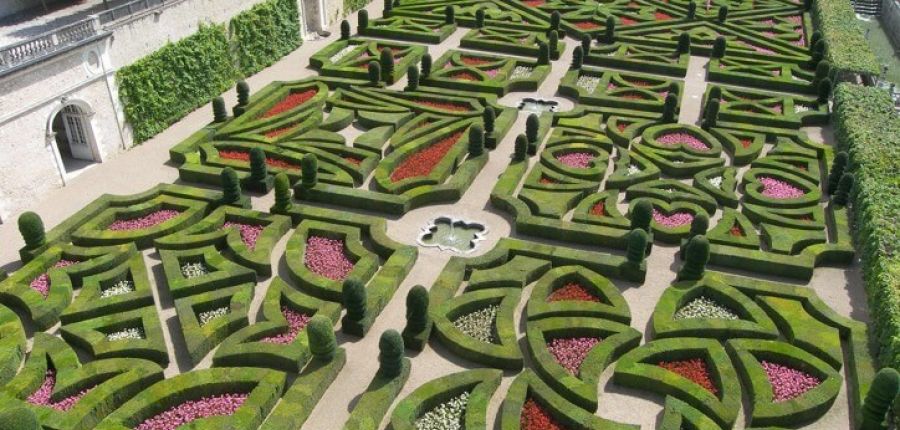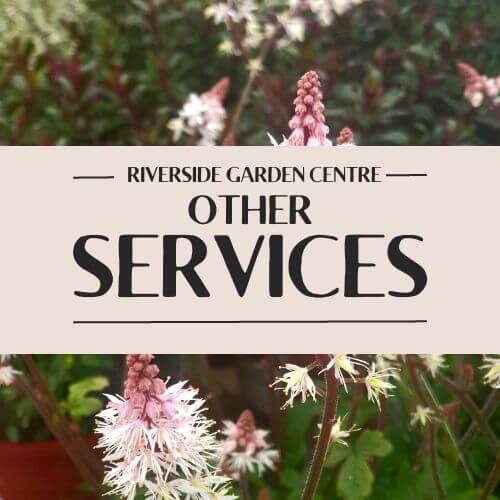Great gardens of the world: Villandry, France
Posted By: The Botanist Category: Design, Plant CareI visited Villandry for the first time 30 years ago on a roasting hot August day, the month when most of the local population has headed to the coast, to be replaced by visiting tourists like me. Villandry is one of numerous chateaux built by the French nobility in a part of France where the river Loire and its numerous delightful tributaries carve a swathe through glorious countryside. It is easy to see why the upper echelons of French society found this area so alluring, choosing it as the location for their country residences – a relatively easy journey from their capital but just out of reach of the intrigues, scandal and skulduggery of court life during the years of the French Renaissance.
Although the chateau at Villandry is a splendid affair - built in the sixteenth century by the Controller-General for War under King Francis I on the site of a medieval castle where King Phillip II of France met King Richard I of England to negotiate peace; later, the home of Jérôme Bonaparte, brother of the emperor - it is the magnificent gardens which are the main attraction. And what gardens they are! Although they were created in the early years of the twentieth century, the gardens are laid out with classic Renaissance formality - a series of stunningly-beautiful ‘rooms’, each distinctly different from its neighbours and separated from them by neatly clipped and shaped box hedging, tall standard roses and even taller evergreen pyramids skilfully positioned like intricately-carved chess pieces, the whole bordered by walkways of pleached hornbeam and honey-coloured stone walls. To add to the overall sense of space and mystery, the gardens are also on different levels, affording tantalising views of places beyond, behind and below. Water is also used to great effect, a whole ‘room’ devoted to a stone edged rectangular lake and ponds with fountains. You get the general idea.
Strolling through the gardens that sunny day was utter joy, surprise after surprise as we turned each corner and a new visa opened before us, welcome shade provided by the tree-lined paths. Later, we ventured into the cool of the Chateau where the windows of an upper floor afforded a panoramic view of the gardens and a better appreciation of the vast scale of it all, the dazzling patterns and colours spread out below, the meticulously clipped and shaped hedges so perfect that they looked as if they had been formed from inert green matter.
Of all the horticultural wonders on show at Villandry, my favourite is kitchen garden. French kitchen gardens are markedly different from their British counterparts, the dissimilarity determined in part by climate, seed varieties and the like, but also the way in which different cultures approach gardening in terms of layout, planting schemes and historical influence. Vegetable gardens on both sides of the Channel have their origins in medieval times and the kitchen gardens of monasteries where the monks tended plants which were grown in distinctive patterns. Whereas the convention followed by English kitchen gardeners led to a four main beds, rotation of crops and vegetables planted in arrow straight rows, the French equivalent evolved into a series of small beds with a geometric planting scheme in each. At Villandry, the use of a cross motive in the layout of plants provides and echo of monastic life. A further nod to the past is provided by the use of roses, grown alongside vegetables – a reminder that monks would liven up their kitchen gardens with flowers, used in turn for cutting and the decoration of sacred statues in their monastery.
Kitchen gardens such as the one at Villandry are generally referred to as ‘potagers’ – a French word which describes a planting scheme where non-edible flowers are planted alongside vegetables and herbs. At Villandry, the layout of the beds changes each time a fresh planting is made, the aim being to create an eye-catching display of colour and structure. Cavolo Nero, its long, fluted, dark green leaves rising tall from among short and stunted beetroots with rich, deep-coloured foliage, a border of acid yellow marigolds (French, of course!) completing the overall effect. Hard fruit is grown on beautifully pruned trees, cordon trained in the step over manner to form a low ‘wall’ around the garden. In case you are wondering, the precious earth in the Villandry kitchen garden is revived by careful use of specific plant varieties, each adding the required nutrients to the soil – rather than leaving beds empty and resting and might be the case in the UK.
At Villandry, the influence of the potager is very apparent in the vast formal gardens where sprawling, blue-green leeks and serried ranks of pink-tinged ornamental cabbages are kept in check by neatly clipped box hedges.
I was lucky enough to return to Villandry a few years ago, the gardens even better than before and certainly repaying a lengthy second look. If you are lucky enough to visit Villandry one day, I can guarantee that you will, like me, come away inspired.







